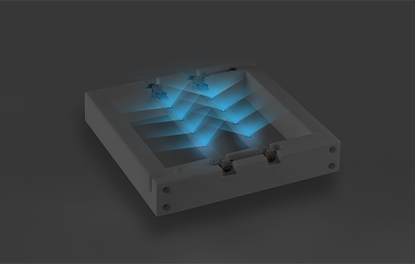What are the different types of UV radiation?
The most common form of UV radiation is sunlight, which produces three main types of UV rays : UVA / UVB / UVC.
UVA rays have the longest wavelengths, followed by UVB, and UVC rays which have the shortest wavelengths.
While UVA and UVB rays are transmitted through the atmosphere, all UVC and some UVB rays are absorbed by the Earth's ozone layer.
So, most of the UV rays you come in contact with are UVA with a small amount of UVB.
Like all forms of light on the EM spectrum, UV radiation is classified by wavelength.
Wavelength describes the distance between the peaks in a series of waves.
UVB rays have a short wavelength that reaches the outer layer of your skin(the epidermis).
UVA rays have a longer wavelength that can penetrate the middle layer of your skin(the dermis).
Source[https://www.fda.gov/radiation-emitting-products/tanning/ultraviolet-uv-radiation#UVC]



